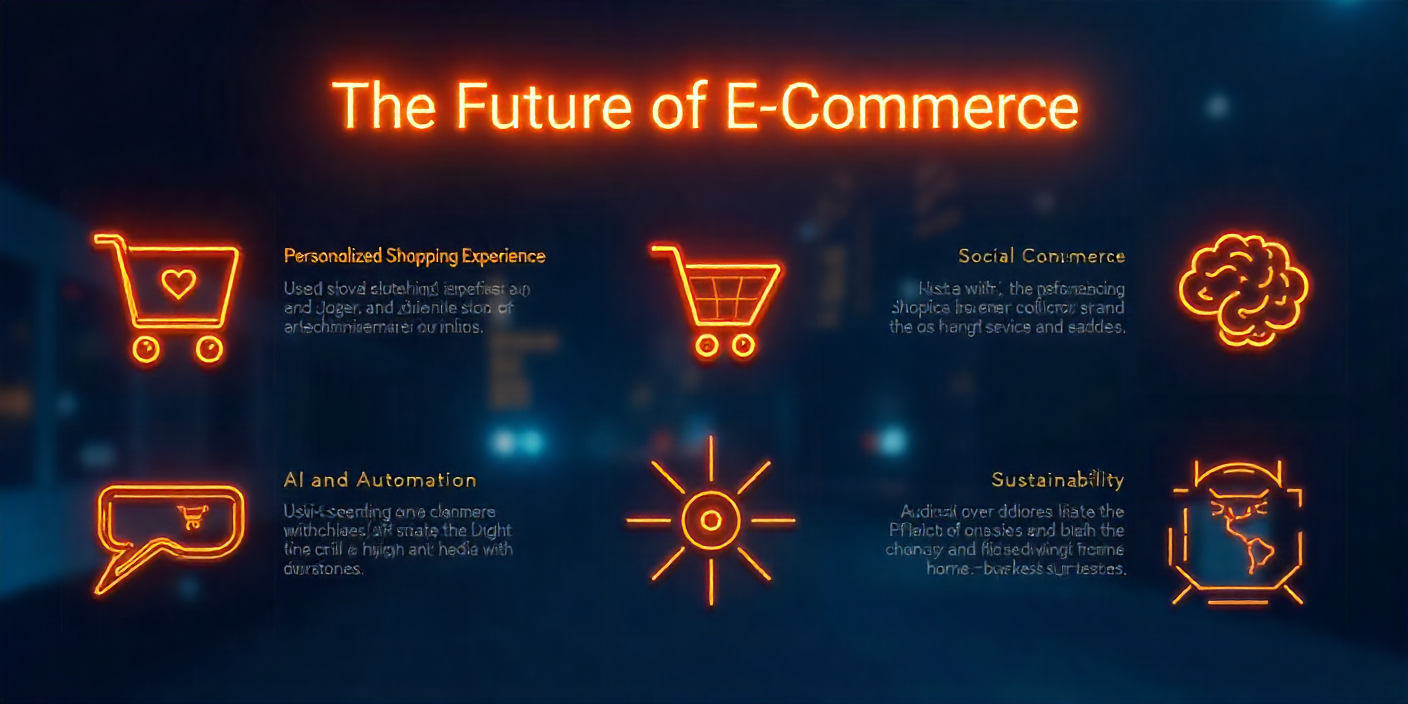Introduction:
Ecommerce is booming, and with competition becoming fiercer every day, standing out in the digital marketplace requires more than just a great product. Smart, strategic decisions are essential for driving growth and attracting customers to your online store. ThinkNugget brings you proven ecommerce strategies that will not only boost your sales but also create long-term success. In this article, we will delve into effective tactics for growing your online store, improving customer engagement, and optimizing your ecommerce business.
1. Understanding Your Target Audience
Before diving into specific strategies, it’s crucial to understand your target audience. Knowing who your customers are, their preferences, and their pain points can guide every decision you make for your online store.
-
Customer Segmentation: Divide your audience into segments based on demographics, interests, and behaviors. This allows you to create personalized marketing campaigns, making your efforts more effective.
-
Customer Feedback: Regularly solicit feedback from your customers through surveys or social media engagement. Use this data to refine your product offerings, website design, and customer service.
2. Optimizing Your Ecommerce Website for Conversions
Your website is the face of your online store. It’s essential to make it easy for visitors to navigate and complete purchases. Here are some key strategies to optimize your site:
-
Mobile Optimization: With a growing number of customers shopping on mobile devices, ensure that your website is mobile-friendly. A responsive design and fast load times will significantly reduce bounce rates and increase conversions.
-
User-Friendly Navigation: Organize your products into clear categories and include an intuitive search feature. Make it easy for customers to find what they’re looking for in as few clicks as possible.
-
Effective Call-to-Actions (CTAs): Your CTAs should stand out and prompt visitors to take action. Use phrases like “Shop Now” or “Limited-Time Offer” to create urgency and drive sales.
3. Leverage SEO to Drive Organic Traffic
Search engine optimization (SEO) is an essential strategy for driving free, organic traffic to your online store. Without SEO, even the best products may not be visible to potential customers. Here’s how to optimize your ecommerce store for search engines:
-
Keyword Research: Identify high-value keywords related to your products. Use tools like Google Keyword Planner or Ahrefs to discover terms your target audience is searching for.
-
On-Page SEO: Optimize product pages with relevant keywords in the title tags, meta descriptions, headings, and throughout the content. Don’t forget to optimize your product images with descriptive alt text.
-
Content Marketing: Create blog posts, how-to guides, or videos related to your products. This content not only adds value for your customers but also boosts your site’s SEO by generating backlinks and increasing dwell time.
4. Enhance Customer Experience with Personalization
Personalization is one of the most effective ways to increase conversions and improve customer satisfaction. When you provide a tailored shopping experience, customers are more likely to make a purchase and return for repeat business.
-
Personalized Recommendations: Use tools like machine learning or AI-driven platforms to suggest products based on past purchases or browsing behavior. Amazon’s “Customers who bought this also bought” feature is a prime example.
-
Email Personalization: Segment your email list and send personalized emails based on customer behavior. For instance, send a special offer to customers who abandoned their shopping cart or offer a discount for a customer’s birthday.
5. Utilize Social Media for Brand Awareness and Traffic
Social media is a powerful tool for driving traffic to your online store and building brand loyalty. Here’s how to leverage it effectively:
-
Content Creation: Create engaging, shareable content that resonates with your target audience. This could include user-generated content, product demos, and lifestyle photos showcasing your products in real-world settings.
-
Influencer Marketing: Partner with influencers in your niche to promote your products. Influencers can provide credibility and introduce your store to a new, engaged audience.
-
Social Commerce: Utilize social media platforms’ shopping features. Platforms like Instagram, Facebook, and Pinterest allow businesses to sell products directly through their apps, making it easier for customers to shop without leaving the platform.
6. Streamline Your Checkout Process
A complicated checkout process is one of the leading causes of cart abandonment. To increase conversions, it’s essential to streamline the checkout process and make it as simple as possible.
-
Guest Checkout: Offer a guest checkout option to make the purchase process easier for first-time customers. Forcing visitors to create an account may lead to frustration and cart abandonment.
-
Multiple Payment Options: Provide a range of payment methods to cater to different customer preferences. Include options like credit cards, PayPal, Apple Pay, and even buy-now-pay-later services.
-
Clear Shipping Information: Be transparent about shipping costs, delivery times, and return policies before the customer reaches the checkout page. Hidden fees are a major cause of abandoned carts.
7. Invest in Paid Advertising
While organic traffic is crucial, paid advertising can give your online store an immediate boost. Platforms like Google Ads, Facebook Ads, and Instagram Ads offer precise targeting capabilities to reach the right audience.
-
Google Shopping Ads: These ads allow you to showcase your products directly in Google search results, providing potential customers with an image, price, and product details right from the search page.
-
Facebook and Instagram Ads: These social media platforms offer powerful targeting features based on user interests, demographics, and behaviors. Run targeted ads to reach users who are most likely to be interested in your products.
-
Retargeting Campaigns: Use retargeting ads to re-engage visitors who have previously interacted with your store but didn’t make a purchase. These ads are highly effective in reminding potential customers about products they left behind.
8. Build Trust and Loyalty with Customer Reviews
Trust is crucial when shopping online, and customer reviews are one of the most effective ways to build credibility. Positive reviews not only improve your reputation but also influence purchasing decisions.
-
Encourage Reviews: After a customer makes a purchase, send them an email requesting feedback. Offer incentives like discounts or loyalty points in exchange for reviews to encourage participation.
-
Display Reviews Prominently: Feature reviews on product pages to help potential customers make informed decisions. Ensure that reviews are easily accessible and visible to improve customer confidence.
9. Analyze Your Data and Adjust Strategies
Data analytics is an essential tool for optimizing your ecommerce business. By analyzing key metrics, you can identify areas for improvement and adjust your strategies accordingly.
-
Track Website Traffic: Use tools like Google Analytics to monitor visitor behavior, identify traffic sources, and determine which pages are converting the best.
-
A/B Testing: Regularly test different versions of your product pages, CTAs, and emails to determine which performs best. Small changes can have a significant impact on your conversion rates.
-
Monitor Sales and Inventory: Keep an eye on sales data and inventory levels. This helps you optimize your stock, identify best-selling products, and predict future demand.
Conclusion:
Growing an online store requires a combination of effective strategies, smart tools, and continuous optimization. By understanding your audience, optimizing your website, leveraging SEO, and embracing personalization, you can create a seamless shopping experience that drives sales and fosters customer loyalty. Implement these strategies and consistently monitor your progress to ensure long-term success. With the right approach, your online store can stand out in a crowded ecommerce marketplace and thrive in today’s competitive environment.



